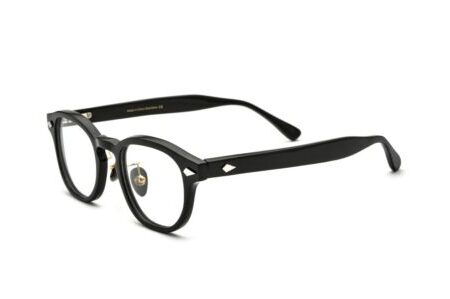A Brief History of Non-Glass Eyewear: From Horn to Plastic

When did glasses stop being glass? The history of eyewear dates back centuries, with early versions made from materials such as bone, horn, and even precious metals. But when did non-glass materials, such as plastic, become the norm for eyeglasses? Let's take a brief journey through the history of non-glass eyewear, from horn to plastic.
Early Eyewear Materials
Before the invention of eyeglasses, people with vision problems would use various objects to aid their sight. The earliest forms of eyewear were made from materials such as:
- Bone
- Horn
- Tortoise shell
- Wood
- Gold and other precious metals
These materials were shaped and polished into lenses that could be held up to the eye, or attached to a frame with a handle. The lenses were often convex, and could be used to magnify objects or correct nearsightedness.
The Invention of Glass Lenses
The first known pair of eyeglasses with lenses made from glass were invented in Italy in the 13th century. Glass lenses quickly became the preferred material for eyewear, as they were clear, scratch-resistant, and could be polished to a high degree of clarity.
Glass lenses remained the standard for eyewear until the 20th century, when new materials began to be developed.
The Rise of Plastic Eyewear
In the early 1900s, a new material called celluloid was developed. Celluloid was a type of plastic made from cellulose acetate, and it quickly became popular for use in eyewear frames. Celluloid frames were lightweight, durable, and could be made in a wide variety of colors and patterns.
During World War II, the production of celluloid was restricted, leading to the development of new types of plastic materials for eyewear. One of these was Zyl, a type of acetate plastic that was even more durable than celluloid. Zyl frames became very popular in the post-war era, and are still commonly used for eyewear today.
Other Non-Glass Materials
In addition to plastic, other non-glass materials have been used for eyewear over the years. Some examples include:
- Polycarbonate: a type of plastic that is highly impact-resistant
- Nylon: a lightweight, flexible material that is often used for sports eyewear
- Trivex: a lightweight, impact-resistant material that is similar to polycarbonate
- Carbon fiber: a strong, lightweight material that is often used for high-end eyewear
Non-glass eyewear has been around for over a century, with materials such as celluloid and plastic becoming increasingly popular in the early 1900s. Today, plastic frames are the norm for most eyewear, with a wide variety of materials and styles available to suit every taste and need.
So, when did glasses stop being glass? While glass lenses were the standard for hundreds of years, new materials such as plastic and polycarbonate began to gain popularity in the early 1900s. Today, non-glass materials are the norm for most eyewear, with glass lenses being used only in certain specialized applications.

You may also be interested...